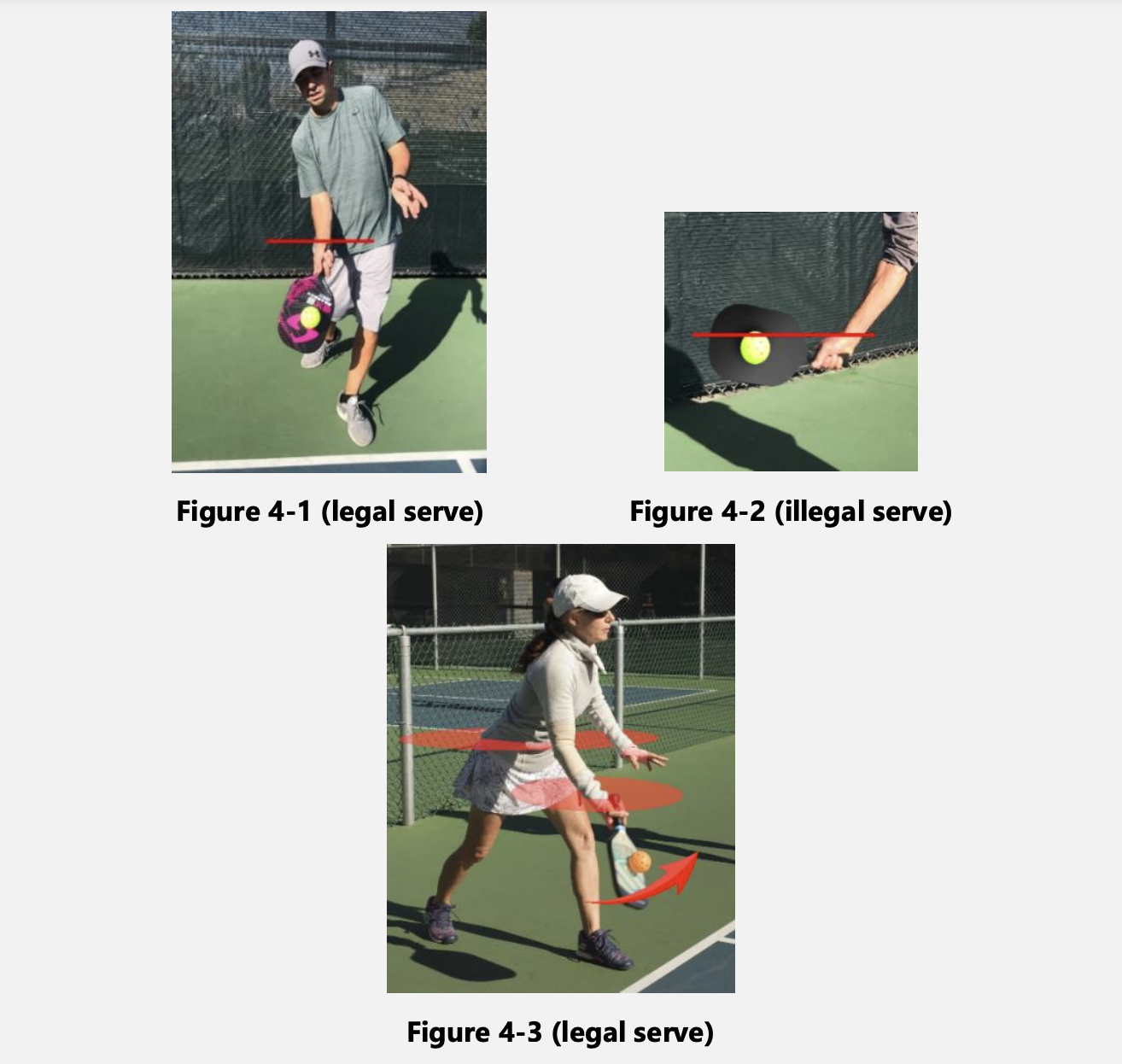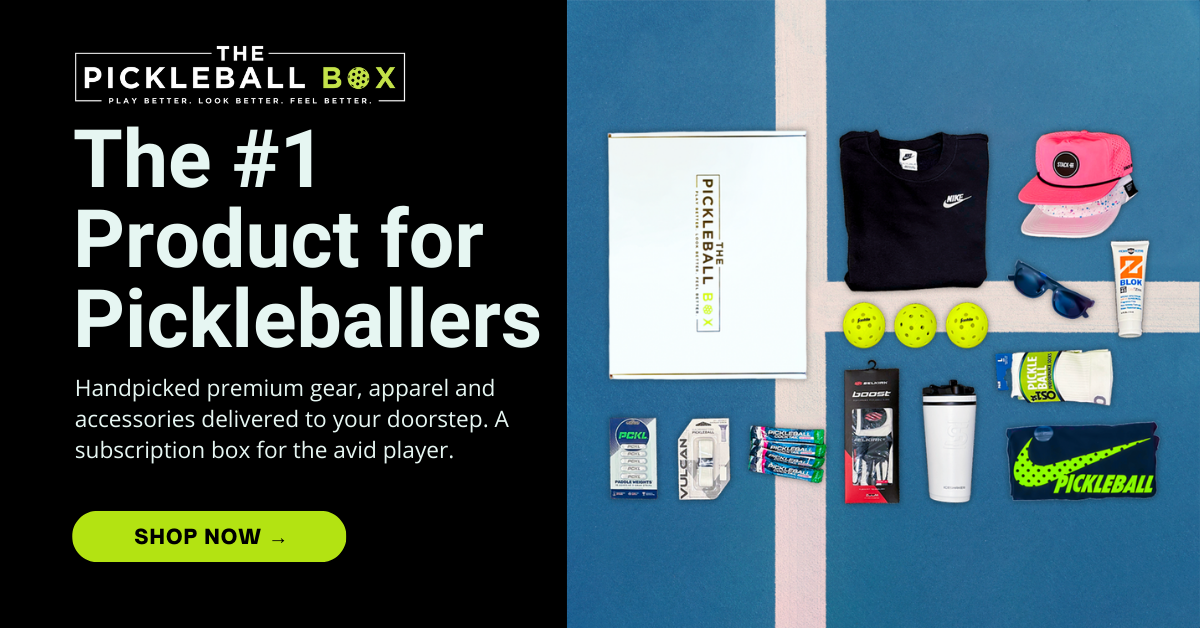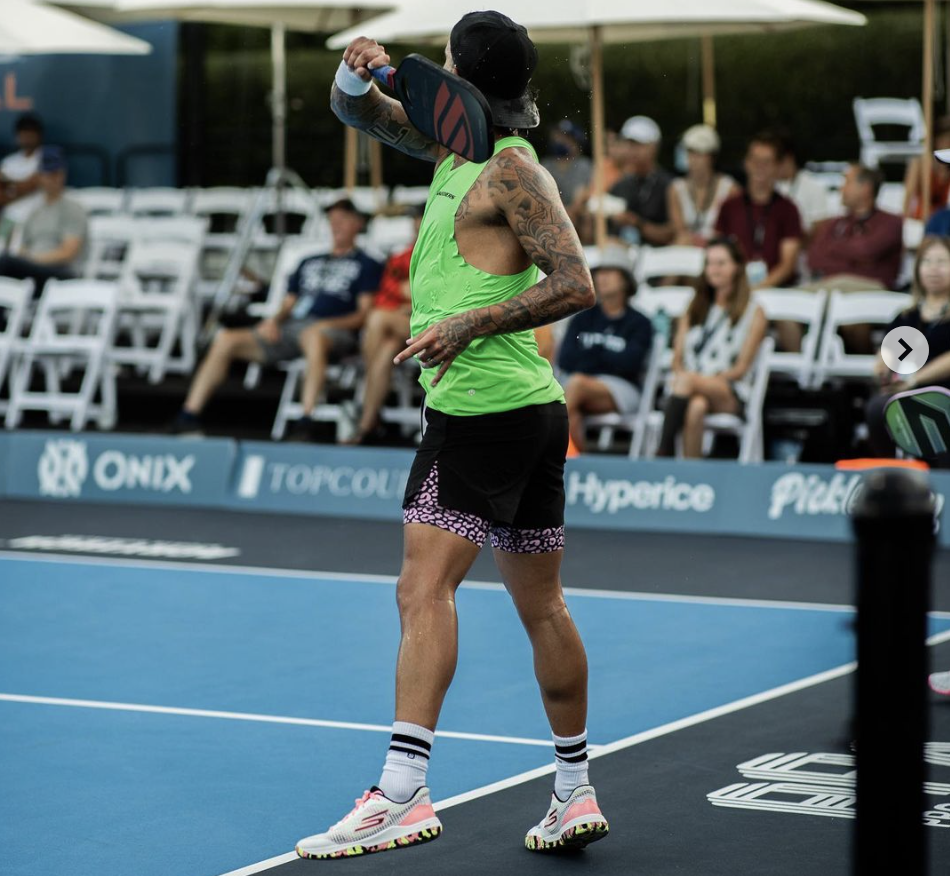
The pickleball serve. It should be pretty straightforward, right?
Wrong. And I'd be willing to bet that it isn't your own serve you're concerned about, it's somebody's that you play against.
So, the next time you have a serve discrepancy, come back to this article.
The Definitive Serve Legality Guide
Even if it is illegal, though, officiating the serve is a challenge, and likely always will be. Why?
Because a referee must not only watch the point of contact, but also the swing path, foot positioning, and more, all in a split-second.
And if a referee struggles with it, good luck to the amateurs. But I digress...

It's worth listening to Pro Zane Navratil, infamous for upending the rule books with his vicious chainsaw serve, talk through the issues of serve legality on a recent episode of PicklePod (skip to 18:18).
Criteria for a Legal Pickleball Serve
Here are the basic things to understand with a standard serve, aka the 'volley' serve.
If a serve is in question, assess it using the below six criteria:
1) At least one foot must be on the playing surface behind the baseline.

For $50 off your first Pickleball Box, use code Dink50.
2) Neither of the server’s feet may touch the playing surface outside the imaginary extension of the sideline or centerline. The server’s release of the ball must be visible to the receiver.
3) Server can't impart spin on the ball during the toss (some natural ball rotation is expected)
4) The server’s arm must be moving in an upward arc at the time the ball is struck with the paddle. (See Figure 4-3.)
5) The highest point of the paddle head must not be above the highest part of the wrist (where the wrist joint bends) when the paddle strikes the ball. (See Figures 4-1 and 4-2)
6) Contact with the ball must not be made above the waist. (See Figures 4-1 and 4-3 above)
So there it is. That's the list. For drop serve rules, continue on below. For the full USA Pickleball breakdown, scroll to the bottom.
1000 mg sodium, 200 mg potassium, 60 mg magnesium.
That's LMNT's science-backed electrolyte ratio. I said I watch a lot of pickleball, well I also play a lot...and for over two years, I've been using LMNT. When you sweat, the primary electrolyte lost is sodium.
You can lose up to 7 grams per day. When sodium isn’t replaced, it’s common to experience muscle cramps and fatigue, aka game-killers.

I have at least one-a-day (I'm a raspberry guy), even when I don't play, so it's pretty easy for me to recommend LMNT to The Dink Fam.
It's nice to endorse products that I actually use...
Common Discrepancies
There are a few discrepancies that players often encounter, and they revolve around points 4, 5 and 6 from above.
6: "Contact with the ball must not be made above the waist."
First of all, depending on what the server is wearing, it might be tough to even determine where their waist is! What a debacle...

Players who ascend to a tip-toe stance at contact can also add to this issue. Where is the waist at the point of contact? Unfortunately, if this is the discrepancy, then it might come down to who is the best debater.
Swing path, point 4, can be difficult to gauge, too. And players who add a lot of topspin may be in danger of violating 5 and 6.
I really like this analysis of Tyson McGuffin's serve from Mark at Third Shot Sports.
It helps break down some of these items in a digestible way and illustrated why Tyson McGuffin's serve is considered legal, despite seeming questionable at first glance.
Excerpt from: USA Pickleball Rulebook 2023
Serving.
4.A.1. The entire score must be called before the ball is served.
4.A.2. Placement. The server must serve to the correct service court (the court diagonally opposite the server). The serve may clear or touch the net and must clear the NVZ and the NVZ lines. The serve may land on any other service court line.
4.A.3. If the serve clears the net or contacts the net in crossing and then touches the receiver or the receiver’s partner, it is a point for the serving team.
4.A.4. The moment the ball is served:
4.A.4.a. At least one foot must be on the playing surface behind the baseline.
4.A.4.b. Neither of the server’s feet may touch the court on or inside the baseline.
4.A.4.c. Neither of the server’s feet may touch the playing surface outside the imaginary extension of the sideline or centerline.
4.A.4.d. (Wheelchair) Both rear wheels must be on the playing surface behind the baseline and may not touch the court on or inside the baseline or outside the imaginary extensions of the sideline or centerline.
4.A.5. The serve shall be made with only one hand releasing the ball. While some natural rotation of the ball is expected during any release of the ball from the
hand, the server shall not impart manipulation or spin on the ball with any part of the body immediately prior to the serve. Exceptions: Any player may use their paddle to perform the drop serve (see Rule 4.A.8.a). A player who has the use of only one hand may also use their paddle to release the ball to perform the volley serve.
4.A.6. In officiated matches, the server’s release of the ball must be visible to the referee and receiver. In matches without a referee, the server’s release of the
ball must be visible to the receiver. There is no fault if the release is not visible to the referee or receiver.
4.A.7. The Volley Serve. The volley serve is made by striking the ball without bouncing the ball off the playing surface and can be made with either a forehand or backhand motion. A proper volley serve includes the following elements:
4.A.7.a. The server’s arm must be moving in an upward arc at the time the ball is struck with the paddle. (See Figure 4-3.)
4.A.7.b. The highest point of the paddle head must not be above the highest part of the wrist (where the wrist joint bends) when the paddle strikes the ball. (See Figures 4-1 and 4-2)
4.A.7.c. Contact with the ball must not be made above the waist. (See Figures 4-1 and 4-3 above)
4.A.8. The Drop Serve. The drop serve is made by striking the ball after it bounces on the playing surface and can be made with either a forehand or backhand motion. There is no restriction on how many times the ball can bounce nor where the ball can bounce on the playing surface. A proper drop serve includes the following elements:
4.A.8.a. The server must release the ball from one hand only or drop it off the paddle face from any natural (unaided) height.
4.A.8.b. The ball shall not be propelled (thrown) downward or tossed or hit upward with the paddle.
4.A.8.c. The restrictions on the Volley Serve in Rule
4.A.7 do not apply to the drop serve
If you've taken the time to read this article, then you're probably already subscribed to The Dink Newsletter.
If not, it's a free 3x weekly digest of the latest in pickleball, including tips, news, stories, highlights and more.

Love Pickleball? Join 100k+ readers for free weekly tips, news & gear deals.
Subscribe to The DinkGet 15% off pickleball gear at Midwest Raquet Sports









